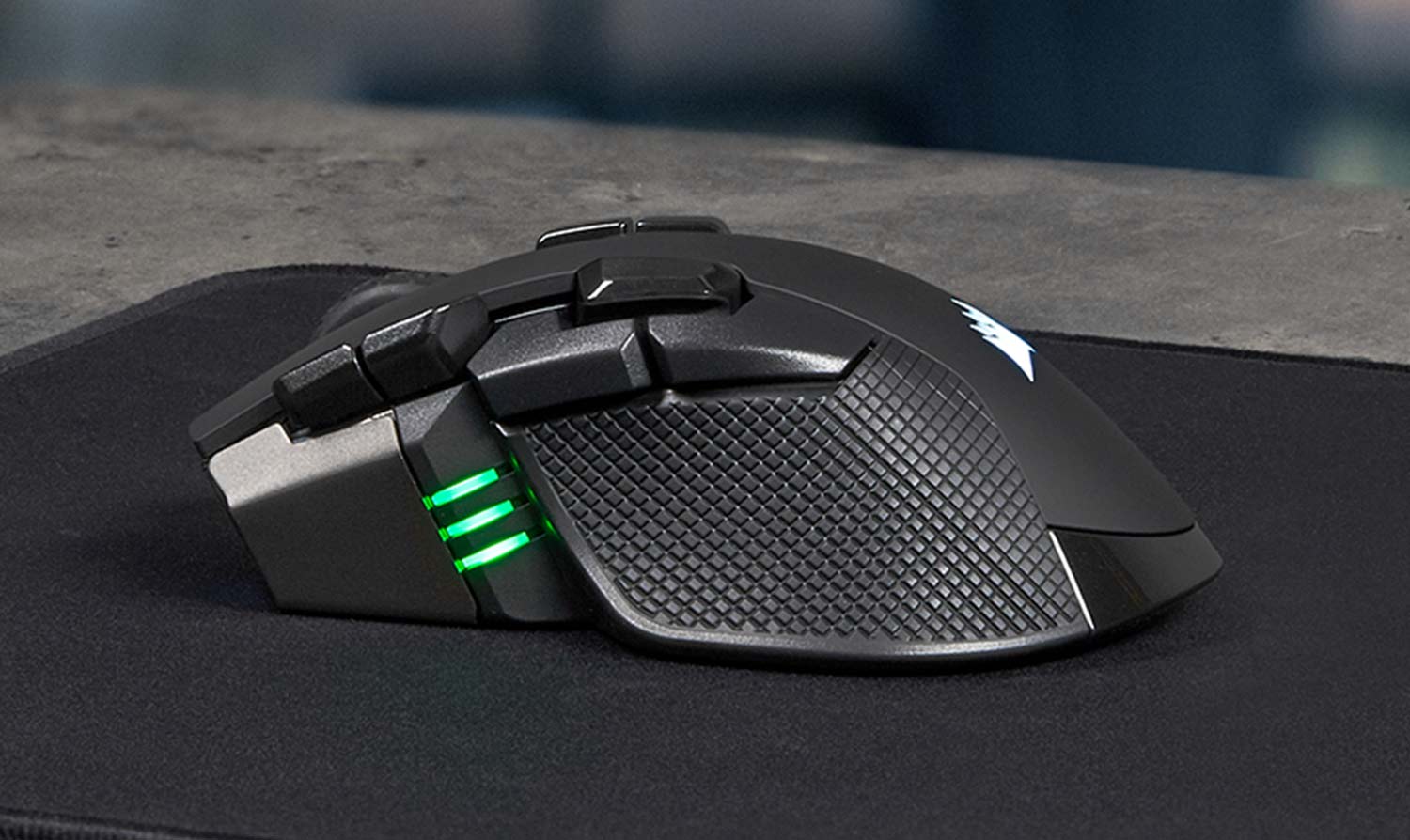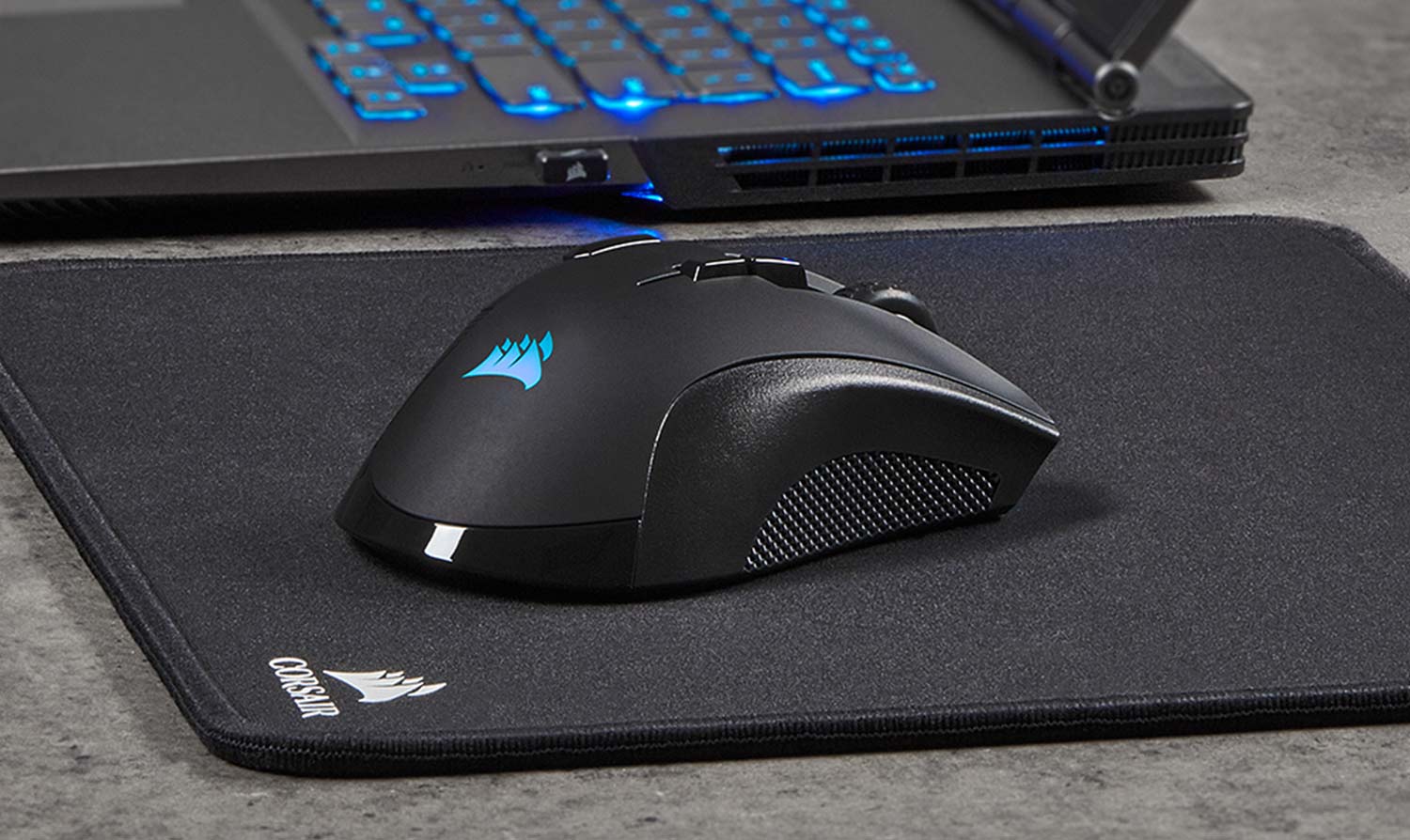Tom's Guide Verdict
If you want a big wireless mouse, the Corsair Ironclaw RGB Wireless is your most affordable option as well as a pretty solid peripheral.
Pros
- +
Comfortable grips
- +
Solid performance
- +
Great wireless connectivity
Cons
- -
Cramped design
- -
Inconvenient button layout
- -
Fiddly software
Why you can trust Tom's Guide
The Corsair Ironclaw ($60) is a solid gaming mouse that fills a very particular niche: serving gamers with large hands. If your meaty mitts would snap something like the Razer Atheris in half, the Ironclaw is hefty enough to survive either your palm or claw play style, complete with comfortable textured grips, programmable software and just enough extra buttons.
Now, if you're willing to shell out a little more money, you can get the Corsair Ironclaw RGB Wireless ($80): a decent upgrade at a reasonable price. However, in tweaking the Ironclaw for a wireless release, Corsair did a few funny things with the design, putting new buttons where the mouse really didn't need any and retooling the thumb buttons to take up more space. Playing with them side by side, the original Ironclaw simply feels a lot better, especially if you don't need 10 buttons in your everyday gaming sessions.
If you want a big, wireless mouse, the Ironclaw Wireless is easily your most affordable option, and it's a pretty solid peripheral, to boot. But if you can deal with a cord, the gadget's wired cousin still offers a few tangible design advantages
Design
Like the wired Ironclaw, the Ironclaw RGB Wireless is enormous. Measuring 5.1 x 3.2 x 1.8 inches, it dwarfs a lot of other gaming mice, particularly in its height. The downside is that folks with smaller hands can't really use a claw grip; the upside is that folks with bigger hands can use either a palm or claw grip without experiencing any issues. It's also ergonomically designed (right handers only), and it has textured rests on both sides of the mouse. It's comfortable to hold and comfortable to use.

I had more mixed feelings about the button layout. The wired Ironclaw had a respectable seven buttons; the Ironclaw Wireless has 10 and feels much more cramped as a result. There's a left button, a right button, a clickable scroll wheel, two face buttons and two thumb buttons.
The wired Ironclaw had a respectable seven buttons; the Ironclaw Wireless has 10 and feels much more cramped as a result.
But the thumb buttons this time are also clickable from the top and house a "sniper" button right in the middle. There are also two more buttons just next to the left button, which you can click with your index finger. By default, these control dots-per-inch (DPI) sensitivity, but you can program them to do anything you want.
MORE: Our Favorite Gaming Mice for Every Genre
The problems with the three new buttons are twofold. First, the index-finger DPI buttons aren't really necessary; the two buttons beneath the scroll wheel did a perfectly fine job managing this on the wired model. Furthermore, the sniper button is in a very weird spot, since you have to reach your thumb all the way up and around to click it. When you compare and contrast models like the Corsair M65 RGB Elite, which puts the sniper button right near where your thumb naturally rests, the added buttons are a confusing design decision.
Features
The Ironclaw has "wireless" right in its name, so it's fitting that the mouse's cordless connectivity is one of its best features. You can connect the Ironclaw Wireless via either Bluetooth or 2.4-Ghz dongle. Both options are easy to set up and performed with perfect reliability during my gaming and productivity tests. However, in Bluetooth mode, the DPI sensitivity seemed a little more aggressive than usual, and you can't program the mouse with the iCUE software, so I'd recommend the dongle, if possible.
(That means there's nowhere to store the dongle inside the Ironclaw Wireless, which is a minor headache. The dongle is minuscule and just begging to get lost in a drawer somewhere, so having a place to keep it when it's not in use would really have been helpful.)

Speaking of the iCUE software, you'll be familiar with it if you've used a Corsair mouse, keyboard or headset within the last few years. It's a very detailed and complex program that allows you to reprogram buttons, set DPI levels, create macros and adjust backlighting. The program works fine, once you get over the learning curve, but it's not quite as user-friendly as competing programs like Razer Synapse and Logitech G Hub.
It's also frustrating that you can't check the Ironclaw Wireless' battery without going into the iCUE settings menu. This is something most users will want to know at a glance, but instead, it's hidden so well that I had to look it up online to find out where it was.
MORE: Our Favorite Gaming Keyboards
One thing that deserves some praise, though, is the crystal-clear DPI lighting. Just like the wired Ironclaw, the Ironclaw Wireless has three lights right next to the thumb buttons, one corresponding to each possible DPI level. (You can customize these levels to anything between 100 and 18,000.) There's no guesswork or complex patterns involved, and you can even choose the color that denotes each DPI setting.
Beyond that, there's some illumination on the palm rest and beneath the scroll wheel, but you're not likely to notice either one while you're in the game.
Performance
The Ironclaw Wireless, like most Corsair mice, boasts excellent in-game performance. I ran it through Destiny 2, World of Warcraft, StarCraft: Remastered and Thronebreaker: The Witcher Tales to get a good idea of its capabilities and came away very pleased. From building up massive Zerg armies, to undertaking legendary quests in Azeroth, the Ironclaw was responsive, precise and accurate.
I have only one qualm, which I touched on earlier: The sniper button is not in a very good location. In Destiny 2, I've enjoyed using sniper buttons on competing mice in order to slow down my DPI while aiming.
From building up massive Zerg armies, to undertaking legendary quests in Azeroth, the Ironclaw was responsive, precise and accurate.
However, it's in such a strange place on the Ironclaw Wireless, I found myself eschewing it entirely. Having an extra button that's inconvenient to use is arguably less helpful than not having an extra button in the first place.
Bottom Line
I like the Ironclaw Wireless, largely because I liked the original Ironclaw, and the cordless version retains most of the same features. At the same time, most of its changes detract rather than add. The new buttons aren't ideally situated and make the mouse feel more cramped as a result. On the other hand, $80 for a wireless mouse from a major manufacturer is not at all unreasonable, and having both Bluetooth and USB connectivity is a handy feature.
The Ironclaw Wireless is well worth considering, particularly if you have big hands. However, if you can live with fewer buttons, the Corsair Harpoon RGB Wireless delivers a similar experience for $50, and if you're not concerned with wireless features, you can snag a regular Ironclaw for $60. Choose wisely, but be aware that there are really no wrong choices among those three.
Credit: Corsair
Marshall Honorof is a senior editor for Tom's Guide, overseeing the site's coverage of gaming hardware and software. He comes from a science writing background, having studied paleomammalogy, biological anthropology, and the history of science and technology. After hours, you can find him practicing taekwondo or doing deep dives on classic sci-fi.


